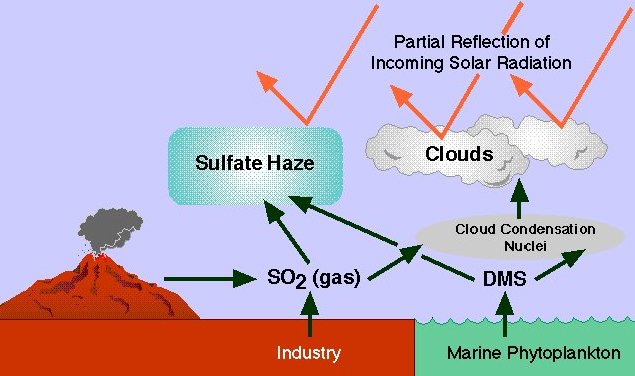
- Agriculture activities: burning of agriculture wastes; burning of forests to extend agriculture land, etc.
- Cooking and heating.
Burning produces various gases and particulates. Particulates containing
carbon are called carbonaceous aerosols.
 |
Example
of human activities resulting in biomass burning:
|
DUST SOURCE:
Mineral dust is injected into the atmosphere
by surface winds from dry soils where the vegetative cover is low and sparse.
| The classification
of mineral dust as "natural aerosol" is misleading if "natural" is interpreted
as "not influenced by human activity", because the
production of atmospheric mineral dust without doubt increases in areas
where the soil surface is disrupted by agricultural activities or new soil
surfaces are exposed to wind erosion through deforestation and shifting
desert boundaries.
Dust flux from disturbed sources may be stronger than dust flux from natural sources for two main reasons:
|
SULFATE
AEROSOL SOURCES:
Global sulfur emissions to the atmosphere have natural (volcanic, soils and plants, biomass burning, oceanic) and anthropogenic sources (industry, biomass burning).

SEA SALT AEROSOL SOURCE
It is basically salt from sea spray and bursting bubbles. Therefore, it is going to depend on the wind fields.